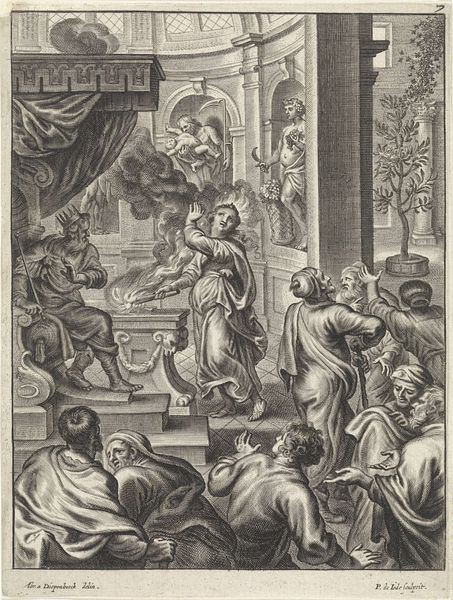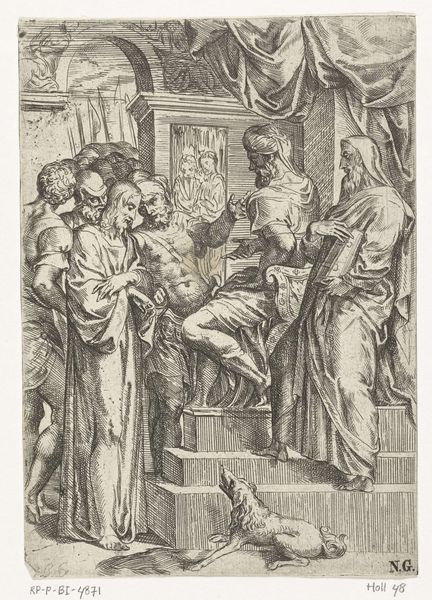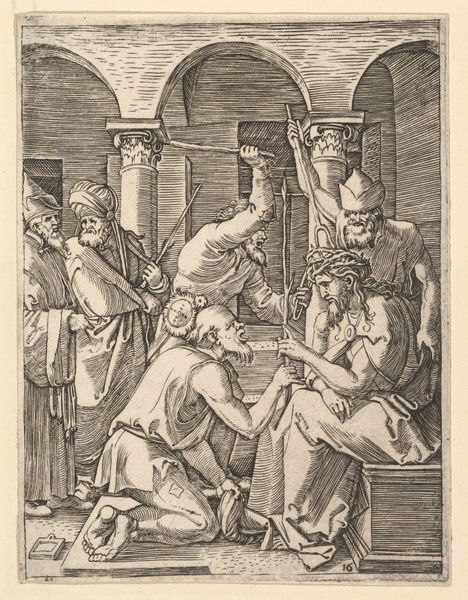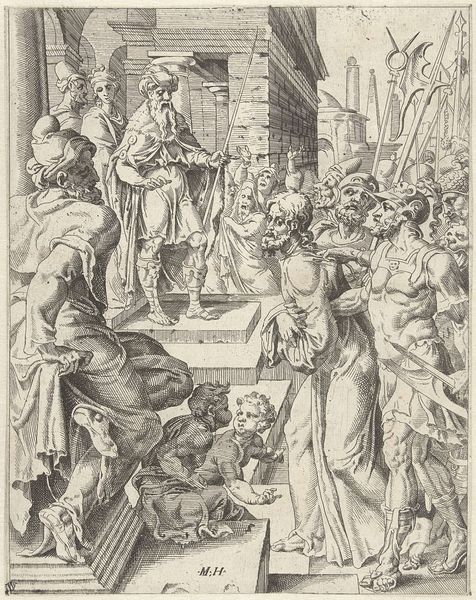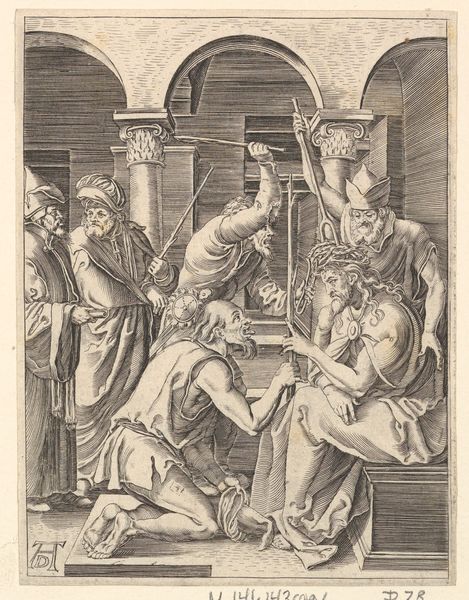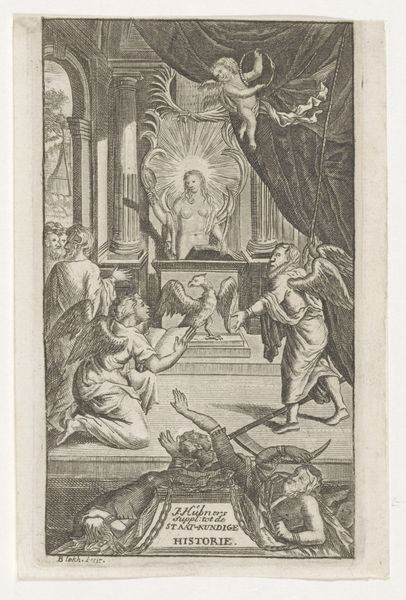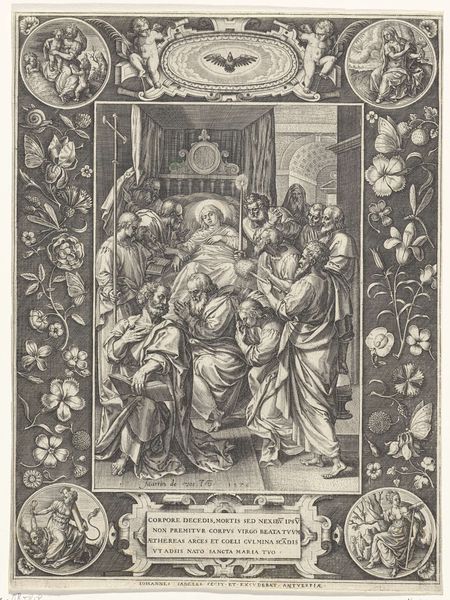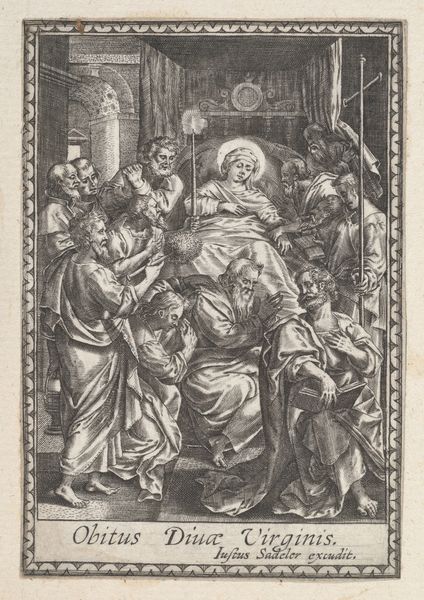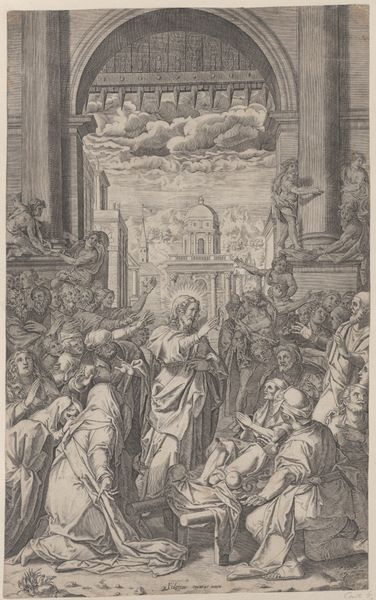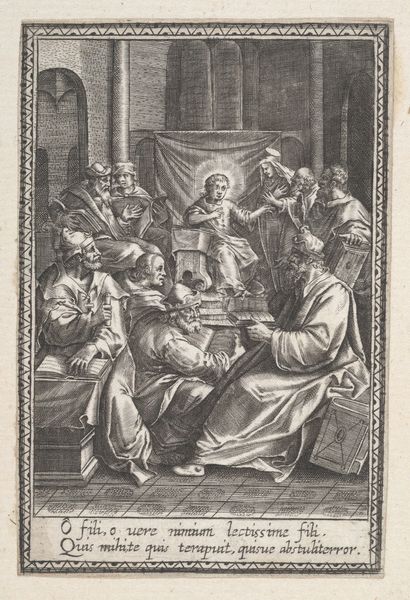
drawing, print, engraving
#
drawing
#
narrative-art
#
baroque
# print
#
figuration
#
line
#
history-painting
#
engraving
Dimensions: Sheet (Trimmed): 13 11/16 × 8 11/16 in. (34.7 × 22.1 cm)
Copyright: Public Domain
Curator: Here we have Cornelis Bloemaert’s “Saint Paul Preaching in Athens,” an engraving dating back to 1679. Editor: It’s visually striking. The composition has a dynamism; you can sense the fervor in Saint Paul's posture. But there's also a clear stratification of figures – some listening intently, others dismissive. Curator: Precisely! The artist masterfully employs line and shading to create depth and volume. Observe how Bloemaert's line work contributes to the image’s overall Baroque sensibility, heightening the drama. Note the classical architectural backdrop that gives it scale. Editor: True, the backdrop alludes to its specific historical context, that crucial moment in the New Testament when Paul directly confronted Athenian paganism. The stratification echoes societal tensions. Bloemaert visualizes those power dynamics effectively, with some visibly sneering while others show sincere engagement. Curator: Bloemaert presents the scene with such intentional symmetry, though. The positioning and grouping are hardly accidental, contributing significantly to the piece's balanced structure. It suggests a very conscious effort to arrange each figure. Editor: Arranging as a conscious rhetorical strategy. In doing so, the work encourages the viewer to ask: what does it mean to listen? Who gets heard, and who is disregarded or silenced? We might ask ourselves those questions, as an allegory to the art world, even today. Curator: A potent question, yes, though my analysis finds most resonance in the composition as its strongest argument, how this particular structure creates meaning beyond its subject matter. Editor: Yes, certainly a masterclass in its handling of technique and composition, but understanding what exactly that technique is deployed *for* leads us to think about cultural encounters, differing belief systems, and their lasting impact in our present times. Curator: Indeed. An important piece for anyone interested in engraving. Editor: Yes, certainly still potent for critical cultural insights centuries later.
Comments
No comments
Be the first to comment and join the conversation on the ultimate creative platform.
